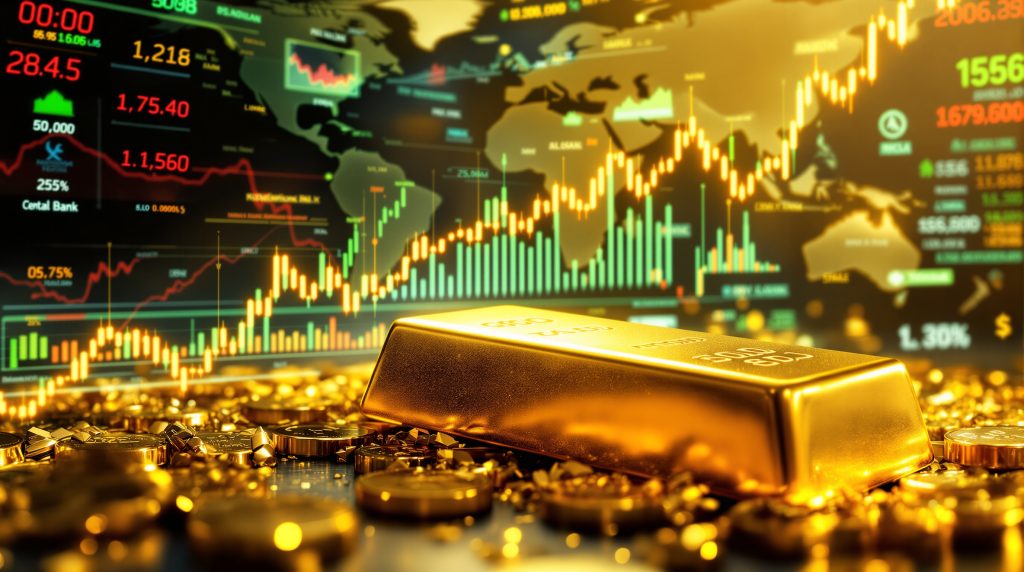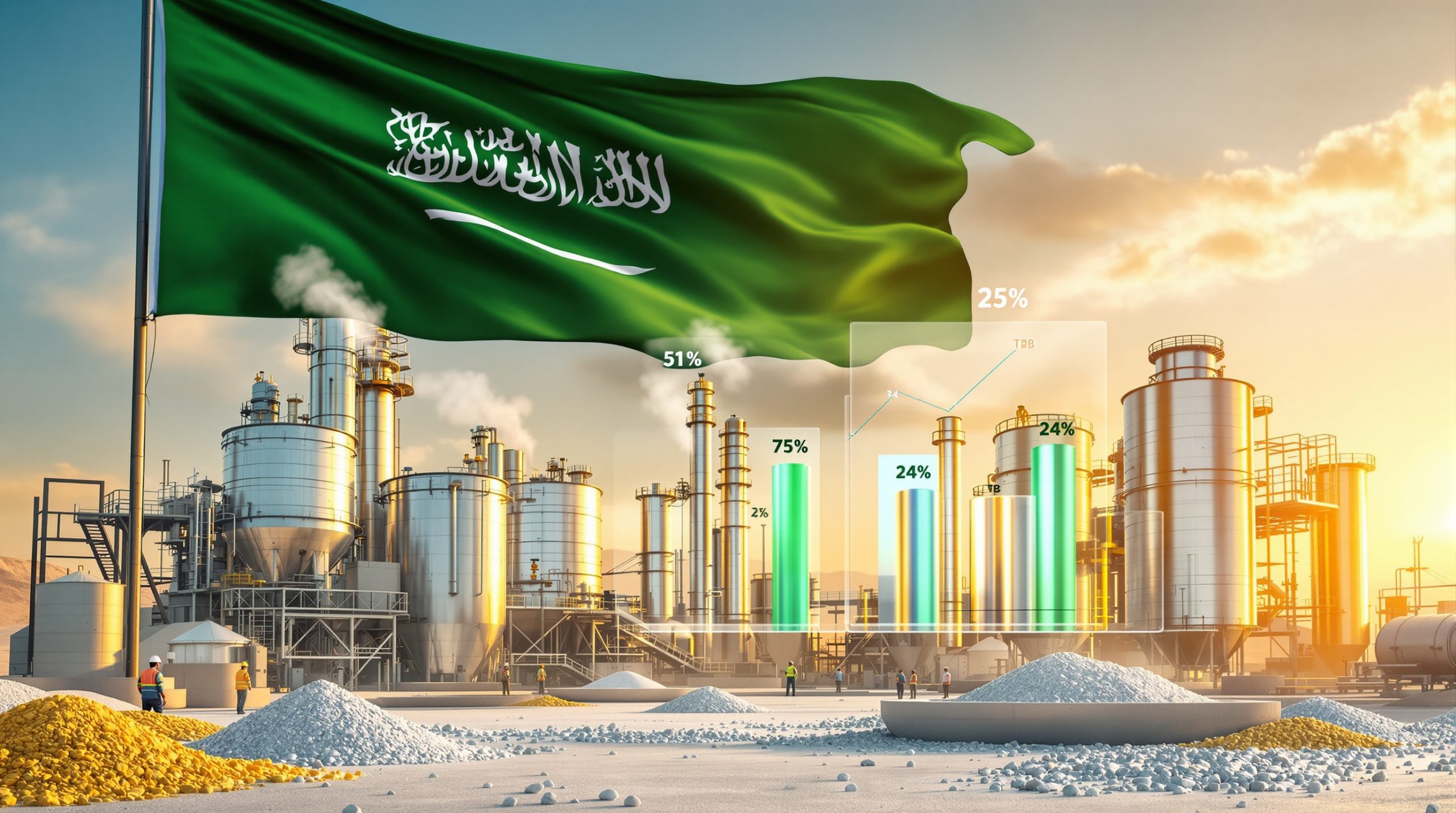What Factors Are Fueling the Current Gold Price Rally?
Economic Uncertainty and Market Volatility
Gold's meteoric rise to record highs is deeply rooted in the current global economic landscape characterized by persistent uncertainty. Financial markets across various asset classes have experienced significant volatility, driving investors toward gold as a traditional safe-haven asset.
Market data shows that correlation between uncertainty indices and gold price movements is at its strongest level since 2020, reflecting investors' growing concerns about economic stability. With global tensions rising and inflation concerns lingering despite central bank interventions, gold has become an increasingly attractive option for wealth preservation.
The precious metal's appeal strengthens during periods when traditional investments face heightened risk, and the current economic climate has created the perfect storm for gold's remarkable ascent.
Central Bank Monetary Policy Shifts
The Federal Reserve's pivot to a rate-cutting cycle has created an extremely favorable environment for non-yielding assets like gold. Market data indicates high probability of continued rate cuts through 2025, with forecasters projecting multiple reductions that could take interest rates significantly lower.
Gold historically thrives in low-interest-rate environments for a simple reason: when interest-bearing assets provide minimal yields, the opportunity cost of holding non-yielding assets like gold decreases substantially. This relationship has been a key driver in gold's current rally.
Analysis of previous monetary easing cycles shows gold typically outperforms during these periods, with the current rally following similar patterns but with even stronger momentum. The prospect of extended accommodative monetary policy continues to provide a solid foundation for sustained gold strength.
Unprecedented Central Bank Purchasing
Central banks worldwide have been aggressively adding to their gold market performance, creating significant demand pressure. This trend represents a strategic shift in reserve asset allocation, with many nations actively diversifying away from dollar-denominated assets.
Emerging market nations have been particularly active buyers, with their central banks adding gold at a pace that has contributed to market tightness. This strategic rebalancing accelerated amid heightened geopolitical tensions, as nations seek to reduce dependence on currencies potentially vulnerable to geopolitical disputes.
The trend of central bank gold accumulation shows no signs of abating, with official sector buying providing a consistent underlying support to the market that has helped propel prices to record levels.
How High Could Gold Prices Go?
Technical Analysis and Price Targets
Gold's technical picture suggests potential for continued upward momentum despite already reaching unprecedented levels. Fibonacci extension analysis based on the 2008-2011 rally points to a potential target of $4,150, according to market technicians analyzing long-term patterns.
"The Fibonacci-extension-based target based on the 2008-2011 rally was just reached, but the upper border of the rising trend channel was not," notes precious metals analyst Przemysław Radomski in his analysis for MINING.COM in October 2025. This creates a technical framework for gold's potential upside target range.
Rising trend channel analysis suggests the current bullish momentum remains intact, even as some indicators flash warning signs. Historical comparisons with previous bull markets provide a framework for understanding potential upside, with the 2008-2011 period offering particularly relevant parallels given similar macroeconomic drivers.
Contrarian Indicators and Warning Signs
Despite the bullish case, several warning signs suggest caution is warranted. Gold has reached "extremely overbought" conditions that exceed levels seen during the 2011 peak, according to technical analysis by market experts. This extreme positioning raises the risk of a significant correction.
The current gold price rally displays classic signs of a parabolic price movement, which historically often ends with sharp reversals. Market analysts have identified concerning divergences between gold's price action and traditional correlations with the dollar index, potentially signaling that the rally may be overextended.
Technical indicators suggest gold is in "the final blow-off part of the speculative parabolic upswing," according to MINING.COM analysis, indicating that while further gains to $4,150 may be possible, such moves "would be very brief and the sell-off can – and is likely to – be something epic" due to the extreme overbought conditions.
Expert Predictions and Market Sentiment
Wall Street analysts have been consistently revising their gold price forecast upward as the rally has continued, with major financial institutions publishing increasingly bullish forecasts. However, sentiment indicators suggest retail investor enthusiasm has reached euphoric levels historically associated with market tops.
Professional money managers have increased their gold allocations despite growing valuation concerns, creating a divergence in perspective between institutional and retail positioning. This split in market sentiment often occurs near significant turning points in long-term trends.
Market experts differ significantly in their outlook, with some pointing to structural factors supporting continued strength while others warn of an imminent correction. This divergence in expert opinion itself serves as an indicator of a market potentially approaching an inflection point.
What's Happening with Other Precious Metals?
Silver's Performance and Potential
Silver has staged an impressive rally alongside gold, approaching the psychologically important $50 level that represents its previous all-time high. Current market data shows silver futures trading at $48.42 per ounce with continued upward momentum.
The gold-to-silver ratio has compressed during this rally, suggesting silver's outperformance could continue in the short term. Market analysts note that silver could rally to $50-$52 before potentially declining alongside gold, with silver's dual role as both a precious and industrial metal creating unique demand dynamics.
Investors should remain cautious, however, as silver is "known for its fake breakouts" according to market analysts. A move "$1-$2 above its all-time high would serve as the ultimate bull trap" before a potential reversal, reflecting silver's historical pattern of extreme volatility around significant price levels.
Platinum Group Metals Dynamics
Platinum has shown remarkable strength, with prices reaching $1,666.80 per ounce, representing a significant increase on the year. The metal's performance has been supported by both investment flows and industrial demand factors.
Palladium has recovered from earlier weakness, with current prices at $1,349 per ounce showing a strong daily gain of 5.14%. This recovery highlights the sector-wide momentum affecting precious metals, though palladium's unique supply-demand fundamentals create different price drivers than gold.
The platinum group metals present different risk-reward profiles than gold and silver due to their higher dependence on industrial applications, particularly in the automotive sector. These differences can create diversification benefits within a precious metals portfolio allocation.
Comparative Performance Analysis
Precious metals have significantly outperformed other commodity classes during this cycle, with gold leading the way. Risk-adjusted return analysis shows gold providing superior stability compared to more volatile alternatives like silver.
The volatility profiles across the metals complex highlight important risk differences that investors should consider when allocating to the sector. While gold typically exhibits lower volatility, it often provides less upside potential during strong bull markets compared to silver or platinum group metals.
Historical precedents suggest that when precious metals rally simultaneously with such strength, it often indicates broader market concerns about economic stability or currency debasement. The current synchronization of price movements across the complex reinforces the narrative of systemic factors driving demand.
How Are Mining Companies Responding to Higher Gold Prices?
Producer Strategies and Financial Impact
Major gold mining companies are experiencing significant margin expansion as gold prices outpace production costs. This improved profitability has strengthened balance sheets across the sector, with many producers reporting record cash flows and earnings.
Capital allocation strategies are evolving in response to the price environment, with companies increasingly focused on growth investments after years of capital discipline. Exploration budgets have expanded, and development projects previously deemed marginal are being reassessed at current price levels.
Dividend policies have become more generous amid improved cash flows, with several major gold mining stocks implementing substantial increases or special dividends to return value to shareholders. Share buyback programs have also gained popularity as companies deploy excess capital.
Exploration and Development Acceleration
Junior mining companies have secured increased funding for exploration activities, benefiting from improved investor sentiment toward the sector. This capital influx is driving new discoveries and resource expansion, potentially addressing long-term supply concerns.
Development-stage projects are receiving final investment decisions that had previously been delayed, accelerating the pipeline of new production. The sector is seeing renewed merger and acquisition interest as producers seek to secure future production sources.
However, mining equities haven't fully reflected gold's price strength, with market analysts noting that "miners already reversed" despite gold nearly touching $4,000, suggesting "miners might move up by relatively little" even if gold continues its rally. This divergence between metal prices and mining stocks is an important consideration for sector investors.
Geographical Shifts in Mining Investment
Political risk assessment has become increasingly important for producers making long-term investment decisions. Countries with stable mining jurisdictions are attracting premium valuations for assets, while politically volatile regions face investment hesitancy despite geological potential.
Emerging mining jurisdictions are attracting increased exploration spending as companies seek to diversify geographical exposure and secure access to new resource areas. This trend is reshaping the global mining landscape and creating new centers of production excellence.
Environmental, social, and governance (ESG) considerations continue to influence development decisions, with companies increasingly prioritizing projects that can meet stringent sustainability standards. This shift is changing investment patterns and operational approaches throughout the mining industry.
What Could End the Gold Rally?
US Dollar Strength Scenarios
Technical analysis shows the US dollar index at critical support levels, with potential for a significant rebound despite the Federal Reserve's dovish stance. Currency market dynamics suggest the dollar may have been oversold during this period of gold strength.
Market experts note that "gold is rallying despite the move higher in the USD Index" which is unusual and potentially unsustainable. Analysis suggests the US dollar "moved higher after verifying its short-term breakout, which itself happened after it verified its medium-term breakout," creating conditions for a potential larger move.
Some analysts believe "this is a massive USD rally waiting to happen, and the PMs [precious metals] are not going to keep ignoring this for much longer," indicating that dollar strength could emerge as a key factor that could end gold's extraordinary rally.
Economic Recovery Implications
Improving economic data could significantly reduce safe-haven demand for gold, particularly if employment statistics show unexpected strength. Labor market dynamics remain a critical factor in central bank policy decisions that directly impact gold prices.
Consumer confidence metrics have shown resilience despite economic headwinds, potentially signaling stronger-than-expected economic activity that could reduce gold's appeal. Leading economic indicators bear watching for early signs of acceleration that could shift sentiment.
Market experts have identified potential economic triggers that could disrupt current market trends, including the consequences of tariff hikes and AI revolution impacts on employment. These factors could create market volatility that initially supports gold before potentially undermining its rally if economic growth accelerates.
Geopolitical Risk Resolution
Current geopolitical tensions have provided significant support for gold prices by elevating the global risk premium. Any diplomatic breakthroughs or de-escalation in key conflict zones could reduce this premium and pressure gold prices.
Historical examples demonstrate that gold often experiences sharp corrections when geopolitical risk factors suddenly diminish. The timing and nature of such resolutions are inherently unpredictable, creating an asymmetric risk for gold investors positioned solely based on geopolitical concerns.
Regional conflicts have varying impacts on precious metals prices depending on their economic significance and potential for broader escalation. Investors should assess the specific nature of current geopolitical risks rather than applying a generic "risk-off" framework to their analysis.
How Should Investors Approach Gold in the Current Environment?
Portfolio Allocation Strategies
Optimal gold exposure percentages should be tailored to individual risk tolerance, with most investment professionals suggesting allocations between 5-15% for diversified portfolios. These allocations should be adjusted based on overall market conditions and correlation benefits.
The decision between physical metal and mining equities involves important risk-return considerations. Physical gold offers direct price exposure without operational risks, while mining stocks provide leverage to gold prices through operational efficiencies and fixed cost structures.
Exchange-traded funds (ETFs) provide a convenient way to gain gold exposure, though investors should understand structural differences between various offerings. Some ETFs hold physical metal, while others use derivatives or gold investment strategies to provide exposure.
Technical Timing Considerations
Key support levels to watch during potential corrections include previous consolidation zones and moving averages that have historically provided price floors during pullbacks. These technical levels can offer strategic entry points for investors looking to establish or add to positions.
Volume patterns provide important insights about institutional positioning, with sustained high-volume advances typically signaling stronger trend durability than low-volume price movements. Current volume metrics suggest significant institutional participation in the rally.
Momentum indicators should be monitored for signs of exhaustion or divergence that often precede significant reversals. Current readings show extreme overbought conditions that historically precede corrections, though timing such moves remains challenging.
Long-term Investment Case
Gold's role in preserving purchasing power during periods of currency debasement remains a compelling long-term investment thesis. Historical analysis demonstrates gold's effectiveness as a store of value during periods of significant monetary expansion.
The metal's historical performance across various economic scenarios provides a framework for understanding its potential role in different portfolio contexts. Gold typically performs best during periods of economic uncertainty, inflation concerns, or financial system stress.
Correlation benefits within diversified portfolios represent one of gold's most important attributes, with the metal often moving independently of traditional financial assets during market stress. This non-correlation feature enhances portfolio efficiency and can reduce overall volatility.
FAQs About the Gold Price Rally
Is gold in a bubble?
Gold's rapid price appreciation has raised legitimate bubble concerns, with technical indicators showing extreme overbought conditions exceeding those seen at the 2011 price peak. However, fundamental factors including central bank buying, geopolitical tensions, and supportive monetary policy suggest structural rather than purely speculative drivers.
The potential for significant corrections exists despite the long-term bullish case, with technical analysis suggesting the market may be in "the final blow-off part of the speculative parabolic upswing." Investors should balance fundamental support factors against technical warning signs when assessing bubble risk.
Historical gold bull markets have experienced multiple 10-20% corrections even during sustained uptrends, suggesting investors should prepare for volatility regardless of their long-term outlook. Risk management remains essential even for those convinced of gold's fundamental value proposition.
How does gold perform during recessions?
Gold has historically delivered mixed performance during the initial phases of recessions, sometimes declining alongside other assets as investors raise cash before recovering as monetary and fiscal responses take effect. This pattern creates potential entry opportunities for counter-cyclical investors.
The metal typically serves as a store of value during periods of financial system stress and currency devaluation that often accompany economic downturns. Gold's performance during recessions depends significantly on the monetary policy response and whether deflationary or inflationary forces dominate.
Recessionary environments often trigger substantial monetary stimulus measures that ultimately benefit gold through currency debasement effects, even if the initial market reaction creates temporary weakness. This cyclical pattern has been consistent across multiple economic cycles.
What's the relationship between gold and inflation?
Gold has traditionally been viewed as an inflation hedge, though this relationship can be inconsistent over shorter time frames. The metal tends to perform best during periods of negative real interest rates (when inflation exceeds nominal interest rates) rather than during high inflation alone.
Analysis of gold's performance during various inflationary regimes shows that the combination of inflation concerns and accommodative monetary policy creates the most favorable environment. When central banks aggressively fight inflation through higher real interest rates, gold often struggles despite rising price levels.
The current environment of persistent inflation concerns combined with central bank rate cuts creates potentially ideal conditions for gold, as it combines inflation hedging demand with reduced opportunity costs from lower interest rates.
Should investors buy physical gold or mining stocks?
Physical gold offers direct exposure to metal prices without operational risks, while mining stocks provide leverage to gold prices through operational efficiencies and fixed cost structures. Mining equities typically outperform during bull markets but carry additional company-specific risks including management, jurisdiction, and production challenges.
Portfolio construction should consider the different risk-reward profiles of these investment vehicles. Physical gold typically provides more stable returns with lower volatility, while mining stocks offer higher potential upside during strong bull markets but with increased downside risk during corrections.
A balanced approach often involves allocating to both physical gold and quality mining equities to capture different aspects of the precious metals cycle. Investors seeking maximum stability might prefer physical metal, while those comfortable with higher volatility in exchange for greater upside potential might emphasize mining shares.
How might AI and technological changes impact gold demand?
Technological advancements including AI are creating both challenges and opportunities for gold. Industrial applications in electronics create consistent demand for the metal, though in relatively small quantities compared to investment and jewelry demand.
Efficiency improvements in mining technology could potentially increase supply over time, though high-grade deposits remain scarce and production costs continue to rise for many producers. The net impact on supply-demand fundamentals remains uncertain.
The broader economic disruption from technological change, including potential employment impacts, may increase economic uncertainty that traditionally supports gold prices. Market analysts have specifically identified the "AI revolution, which causes job losses" as a potential trigger for market disruption that could influence precious metals prices.
Want to Identify the Next Major Gold Discovery?
Stay ahead of the market with Discovery Alert's proprietary Discovery IQ model, delivering real-time notifications of significant ASX mineral discoveries, including potential gold opportunities. Visit our discoveries page to explore how historic gold discoveries have generated substantial returns and start your 30-day free trial today.




